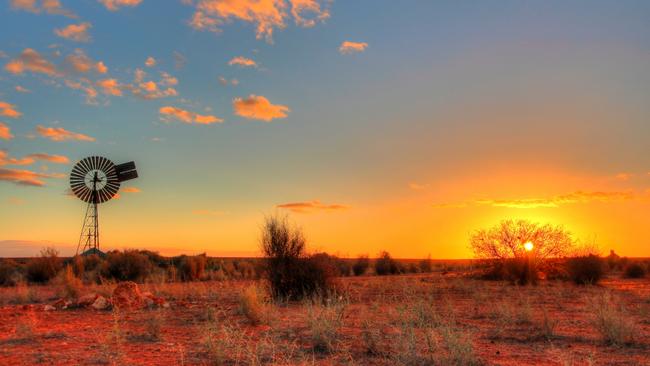Has our pride and love for Australia come to an end?
Gone are the prideful depictions of our sunburnt country via art, song and poetry. But the projection of Australian culture is always evolving.

Surely no finer words have been crafted in glorious description of the Australian continent. Penned by a 25-year-old Banjo Paterson in 1889 in Clancy of the Overflow, Clancy “sees the vision splendid of the sunlit plains extended”. Perfection! If ever there was a romantic view of the Australian interior, this is it.
And there was more of this genre a year later, when Tom Roberts painted Shearing of the Rams, a celebration of life on a sheep station. Here is a composition that shows masculine strength, dedication to task, the presence of youth and hope for the future – all in a backlit, cathedral-like shed that speaks of bounty, of goodness, of promise for the future. I love it!
Less than 20 years later, 23-year-old Dorothea Mackellar published My Country, which speaks of a sunburnt country, a land of sweeping plains. Mackellar speaks directly of her love of Australia, “her beauty and her terror. The wide brown land for me!” The idea of Australia as a place of plenty is tempered by Mackellar’s balancing of beauty and terror, of drought and flooding plains.
An emerging Australian vernacular is evident in The Songs of a Sentimental Bloke, published by poet CJ Dennis during WWI. It’s like an East End Londoner’s incarnation as a quintessential Aussie bloke. Here’s “the bloke’s” reaction to being rebuffed by his new love: “You’d think a bloke was givin’ back-chat to the Queen”, followed somewhat wistfully by the dreamy line: “’Er name’s Doreen.”
The writings of Paterson, Mackellar and Dennis, and the paintings of Roberts, would give way later in the 20th Century to popular songs about Australia. Songs like Peter Allen’s I Still Call Australia Home (1980) and Down Under (1981) by Men at Work, which speak about pride in and love for Australia.
And then came the inspirational Bruce Woodley/Dobe Newton creation I Am Australian (1987). It opens with the Dreamtime, it includes Australia’s (and my) convict forebears, and it cites “the daughter of a digger” and “a child of the Depression”. It was inclusive before inclusivity was a thing. It calls. It unites. It acknowledges. It is the essence of modern-day Australia.
Some might say that the romantic view of Australia ended in the late 1980s, a century on from Clancy. But I think not. It’s just that the platforms have changed. Humour has emerged as a way to speak about Australian culture. Although it was before my time, the radio show Dad and Dave from Snake Gully (1937-1953) carried a version of Sentimental Bloke’s language. Barry Humphries as Edna Everage parodied the way we live. And then, of course, there was The Castle (1997).
All of which leads me to wonder, what is the most effective progenitor of cultural views of Australia in the 2020s? Gone are the prideful depictions of Australia via art, song and poetry. Maybe the shaper of a romantic contemporary view of Australia is something leftfield like the cartoon series Bluey, which projects everyday family life from a suburban home with open doors showcasing Australia’s ever blue skies.
A generation ago it may have been I Still Call Australia Home, today it’s a cartoon series. The effect is the same: Australia has the capacity to deliver quality of life and hope for the future.








To join the conversation, please log in. Don't have an account? Register
Join the conversation, you are commenting as Logout